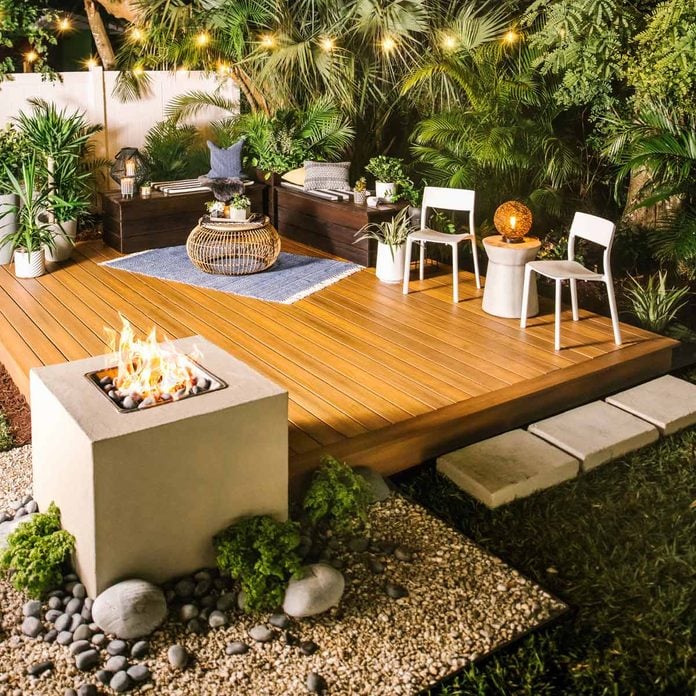
The Easiest Deck to Build
Whether it’s a deck or stone patio or even a patch of grass, defining a place to gather is a must, even for small backyard designs. In this project, we’ll show you how to build a platform deck in just three days. (Yes, you read that correctly—three days!) Since it’s not connected to a house and sits just inches above the ground, it’s an inexpensive, quick-to-build alternative to standard decks and patios.
Pro tip: Your deck can be any size. But if you’re using 2×6 framing material, place footings no more than 5 ft. 11 in. apart, and limit joist length to no more than 6 ft. 8 in.
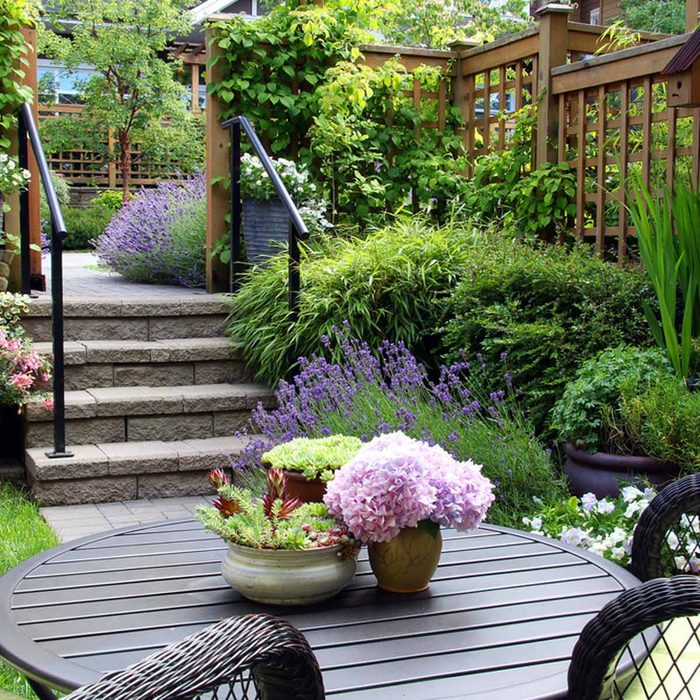
Landscape with Potted Plants
When you don’t have much yard space, digging up the lawn to create landscape beds and borders is less than desirable. Instead of sacrificing precious ground, landscape with potted plants. You can experiment with container shape, color and placement, as well as the plant mixtures.
Also, check out these ways to create a wellness yard that are a major inspiration for those seeking serenity.
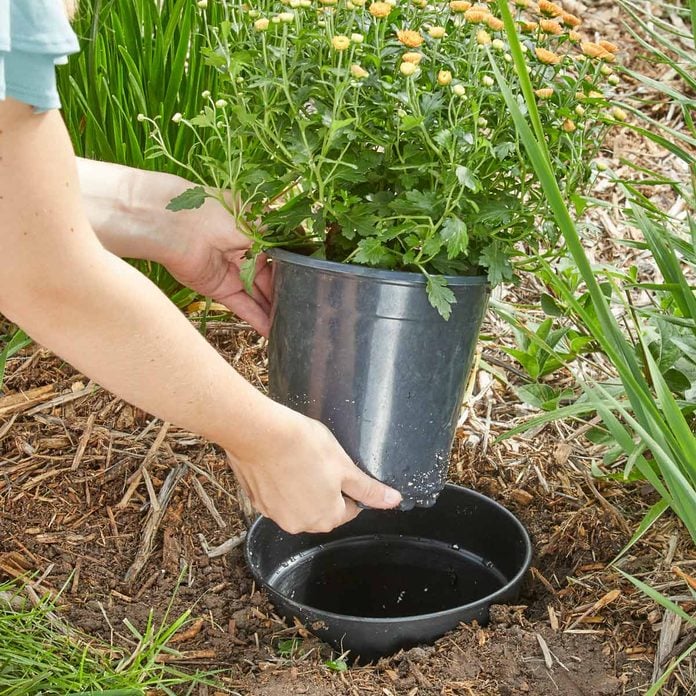
Pot-in-a-Pot Landscaping
Ever wish you could reorganize your garden after seeing how the mature plants look? Here’s a clever way to do it. You’ll need a bunch of landscape pots of the same size, so they’ll nest in each other. Put your plants in doubled landscape pots, and then bury them at ground level. Whenever you want a change, lift out the top pot and put in a different one. This is also really slick for bringing plants indoors over the winter. This method is great for quickly changing out seasonal plants, and allows for easy experimentation with color and placement of plants and flowers.
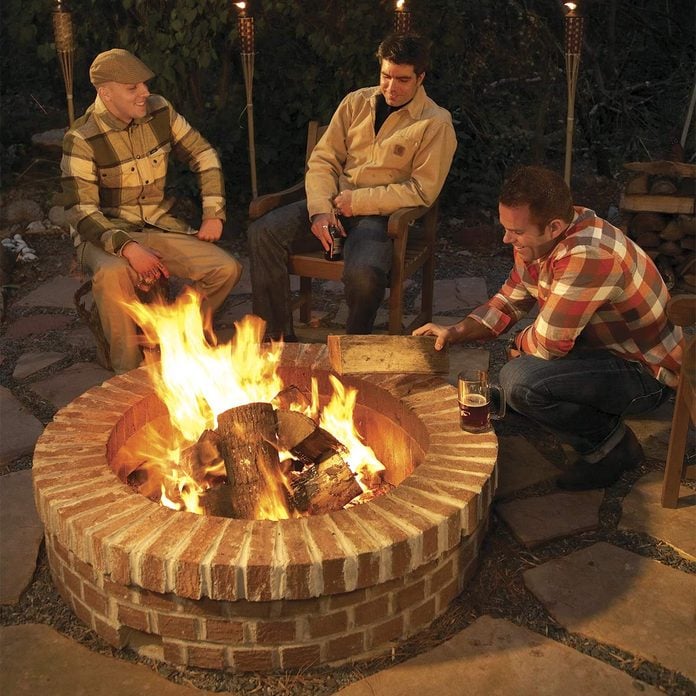
DIY Fire Pit
A fire pit is the perfect place to sit with friends on a warm summer evening. It take any backyard party from day to night in a snap. You can build a fire pit for not much more than the cost of a flimsy store-bought fire ring.
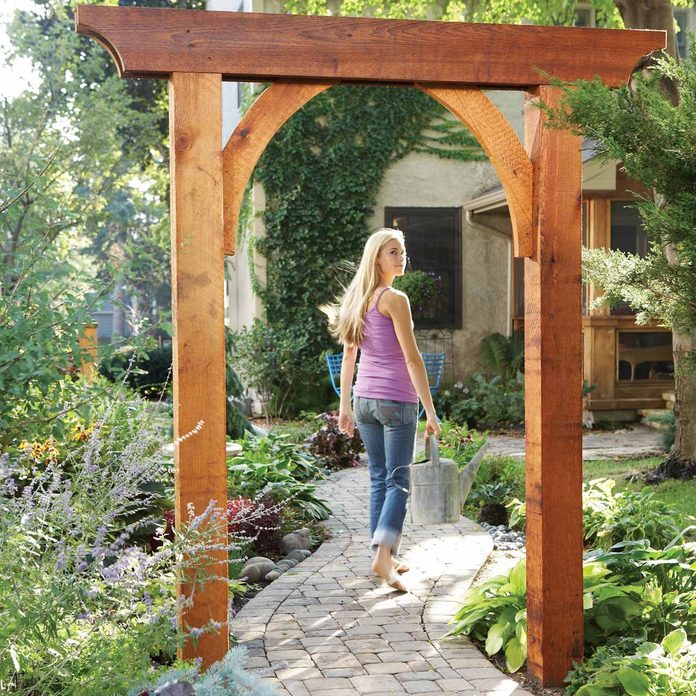
Easy Garden Arbor
This classic garden arch is an easy addition to amp up your garden decor. It has just six parts and can be built in less than a day. Create a gateway, frame a walkway in a hedge, or make it part of a trellis or pergola. This DIY garden arbor will perk up your outdoor decor.
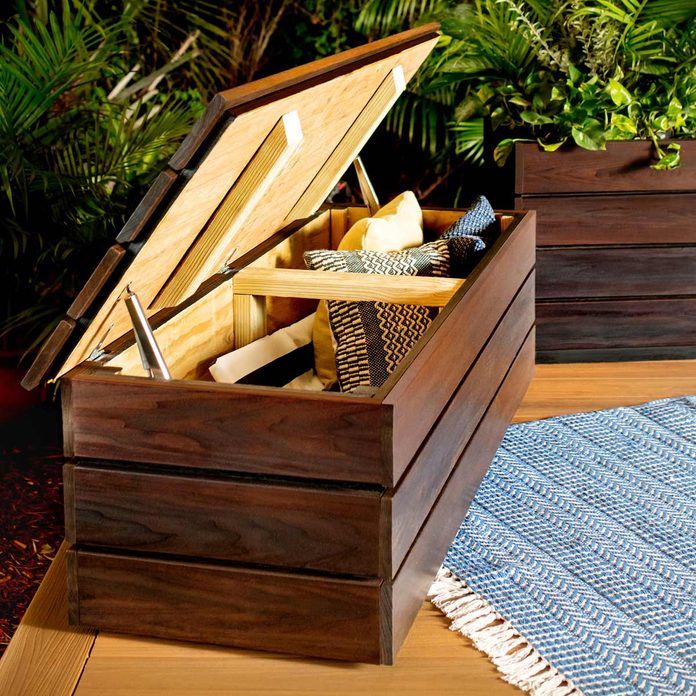
Build in One-Day Storage Bench
Just as with any living space inside your home, adding storage and a few indoor comforts to your outdoor space is a must. An easy DIY outdoor storage bench is one sleek solution. They may look like high-end furniture pieces, but these outdoor storage benches are easy and inexpensive to build.
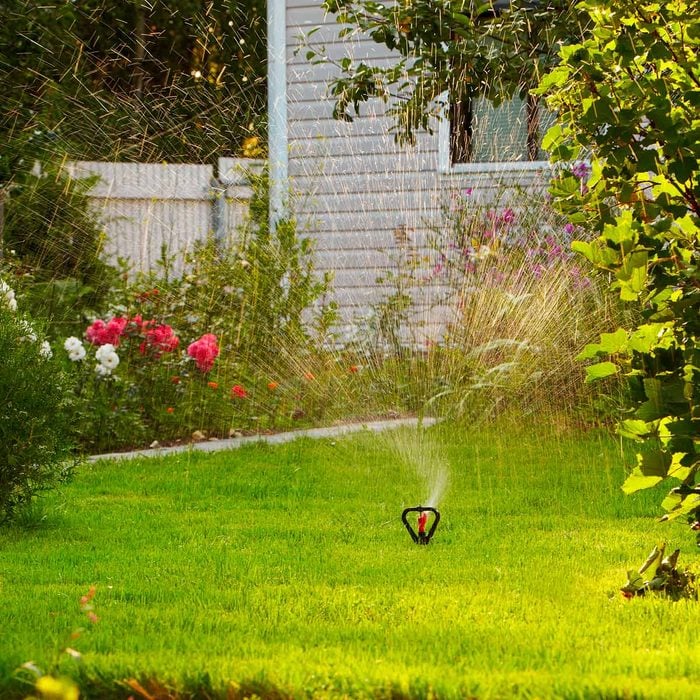
For Greener Grass Water Deeply, But not Often
If you water the lawn frequently and for short periods, the grassroots have no reason to grow deep. Those shallow roots can’t reach deep soil nutrients or deliver the water when you skip a watering. Instead, water deeply enough to penetrate the soil 4 to 6 in. Do our little test for a few waterings and you’ll get a sense of just how long and often. It’ll depend entirely on weather conditions and your soil type.
Water for 30 minutes. Then plunge a spade into the soil and pry out a wedge to see how far the water has penetrated. Four to 6 in. deep is ideal. Not deep enough? Water longer. Once you know how long to water, use a water timer and you’ll know what to set it for every time.
Heavy soils should be watered less often and less heavily but for longer periods of time. Sandy soils, on the other hand, can handle heavy, fast watering but dry out faster. In hot, dry weather, you may have to water every two to three days.
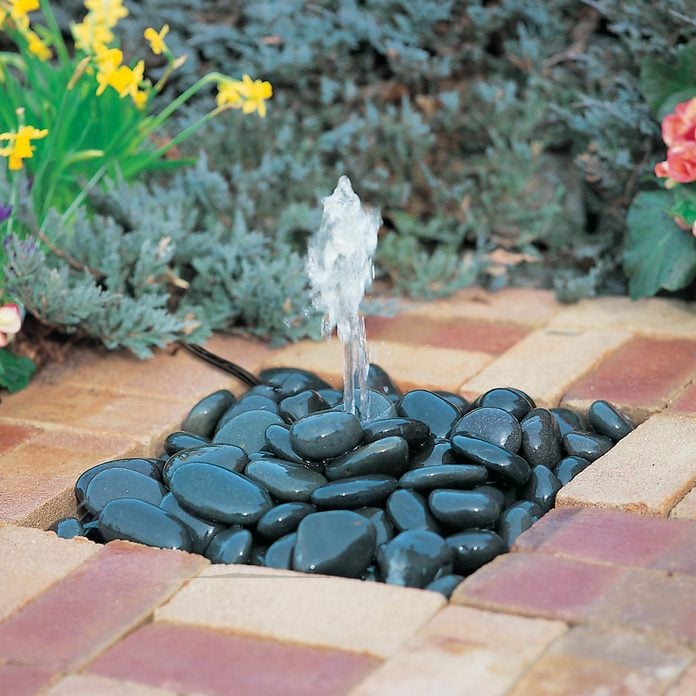
Build a Spring in Your Backyard
If you’ve ever been to Yellowstone, you probably remember the magic of the natural springs. Water bubbles out of the ground from seemingly nowhere. We can’t promise you the grandeur of our national parks, but in less than half a day you can build a small spring that will spark a similar sense of wonder. Looking for more ideas? Here are a few tips to upgrade your backyard.
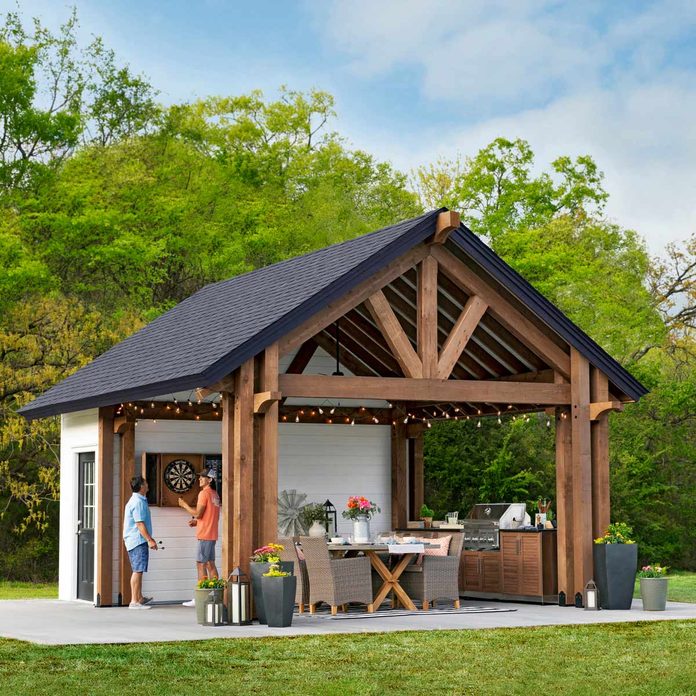
Kitchen Pavilion Shed
This is the largest shed Family Handyman has ever created in the 60 years we’ve built sheds and shown how to build sheds. We joined storage and outdoor living with our latest shed, the outdoor kitchen pavilion shed, for the Ostertag family to enjoy when they have time away from their latest project
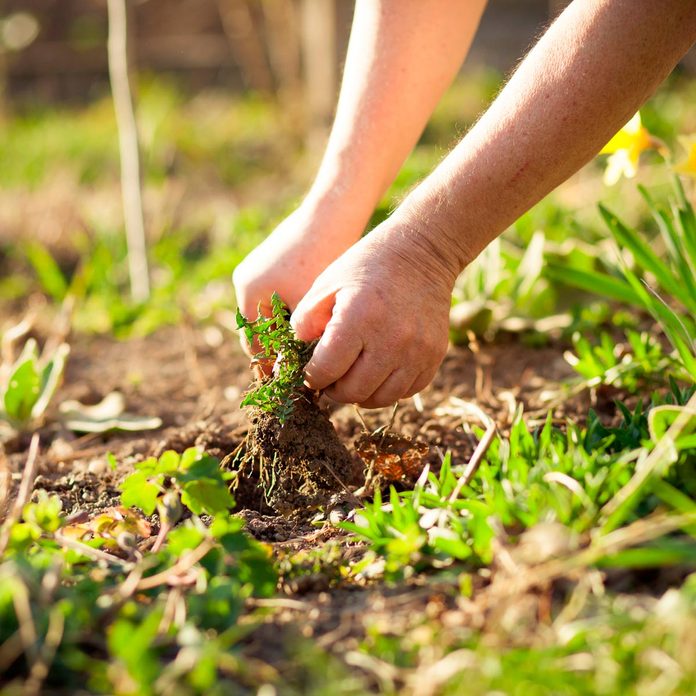
Attack Broadleaf Weeds in Mild Weather
You need to kill weeds when they’re growing. That’s because the herbicide is absorbed through the leaves and then sent throughout the rest of the plant. When the weather is too cool, the weed isn’t growing and the herbicide won’t be absorbed, and the chemical isn’t as effective. Too hot and the herbicide will stress the grass. The product directions will give you the best temperature range. Apply herbicides when rain isn’t forecasted; a soaking will just rinse off the herbicide before it can do any good.
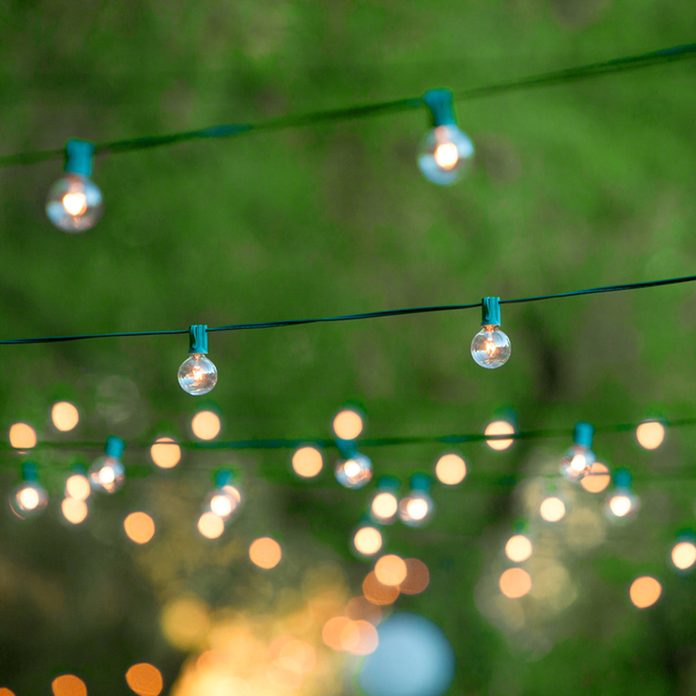
Hang String Lights
There’s nothing quite like the twinkle of outdoor lighting on a cool summer night. String lights are one outdoor lighting option that really up the ambiance. String lights come in many different shapes and colors. Some plug into a power source, while others use batteries.
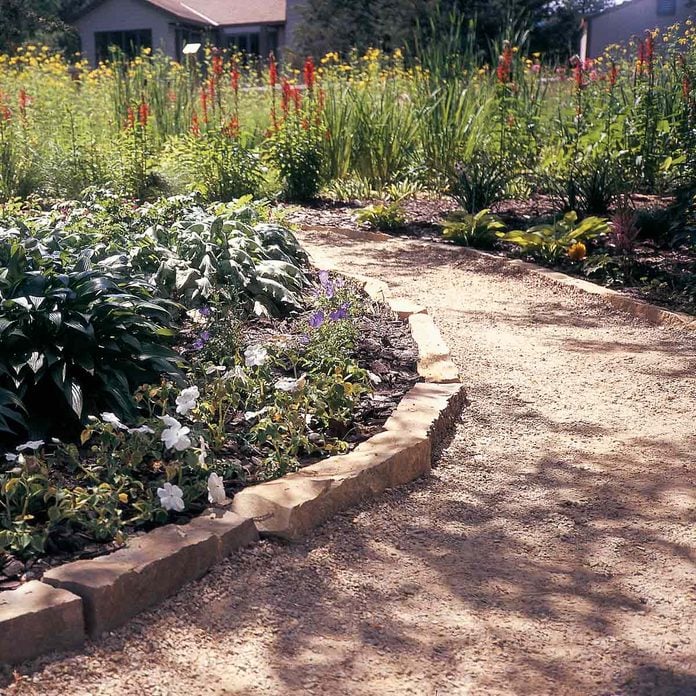
Provide a Path
As you incorporate gathering places, gardens and other backyard landscaping ideas throughout your space, a great way to tie everything together (and make it easier to get around) is to create a garden path. A garden path also protects your lawn and garden from foot traffic.
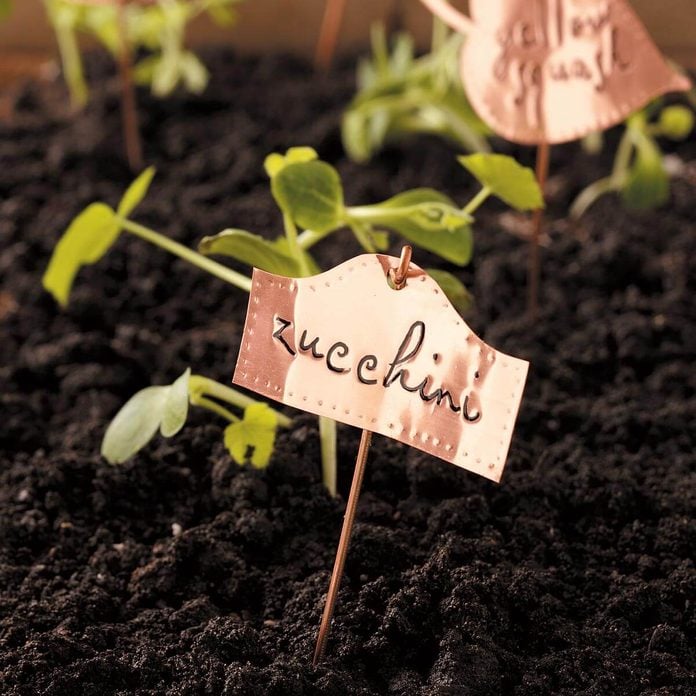
Classic Copper Plant Markers
Finding plant markers that can withstand sun, wind and rain is a challenge. And you want them to be attractive, easy to make and reusable year after year. These cheap, durable DIY plant markers are the perfect solution. Don’t limit yourself to the shapes shown here. Be creative!

Portable Backyard Fireplace
Providing something to gather around such as a fire pit or charming outdoor table will take your backyard to the next level. This DIY modern outdoor fireplace looks expensive (and really heavy)—but it’s not! It’s actually one of our favorite backyard ideas on a budget. Place it by your deck one day and then move it somewhere else in your yard the next.
Pro tip: This outdoor fireplace uses the same components that fuel a typical gas grill.
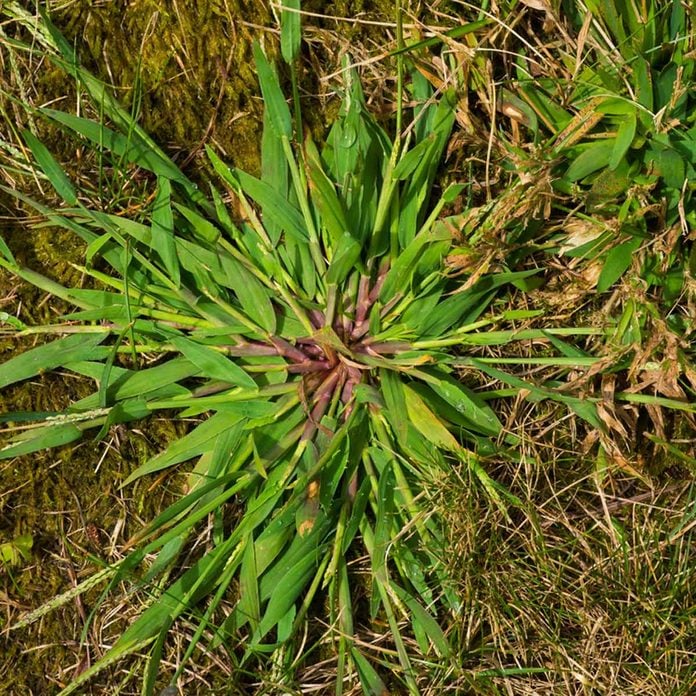
Kill Crabgrass Before it Spreads
Crabgrass preventers (aka pre-emergence treatments) do one thing and one thing only. They prevent crabgrass (and any other seed) from sprouting. Once crabgrass sprouts, it’s too late. Here’s the key. Apply preventer between the second and the third mowings. Because crabgrass starts sprouting a few weeks after the grass greens up, that’s generally just the right time.
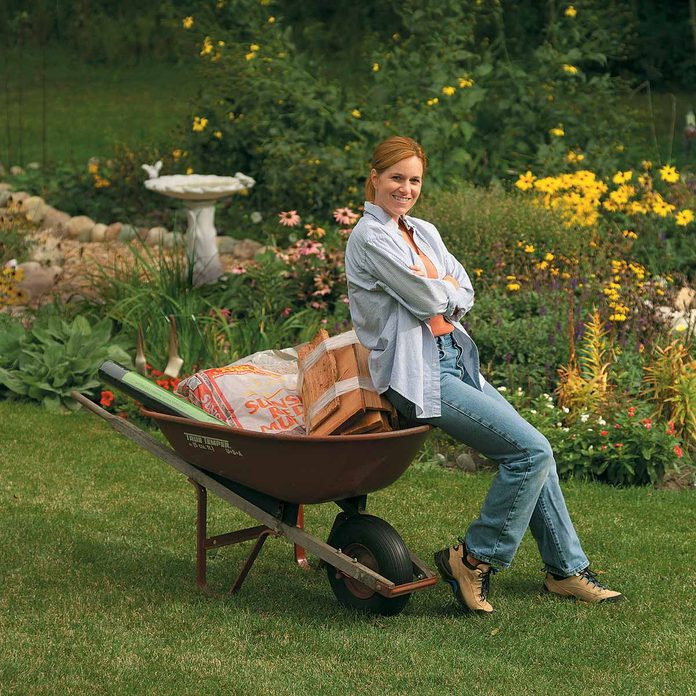
Path in a Wheelbarrow
This garden path is as easy to build as it is to look at and walk on. A bundle or two of cedar shakes, a roll of landscape fabric, a few bags of mulch and a couple of hours are all it takes to build it. No heavy lifting, no fancy tools and really, really cheap!

Make Your Own Cornhole Game
Cornhole boards are a classic backyard game that is easy and inexpensive to make yourself. And with legs that fold up, it’s easy to tote along this cornhole set for tailgating, camping, and more. Paint your DIY cornhole board with any pattern.
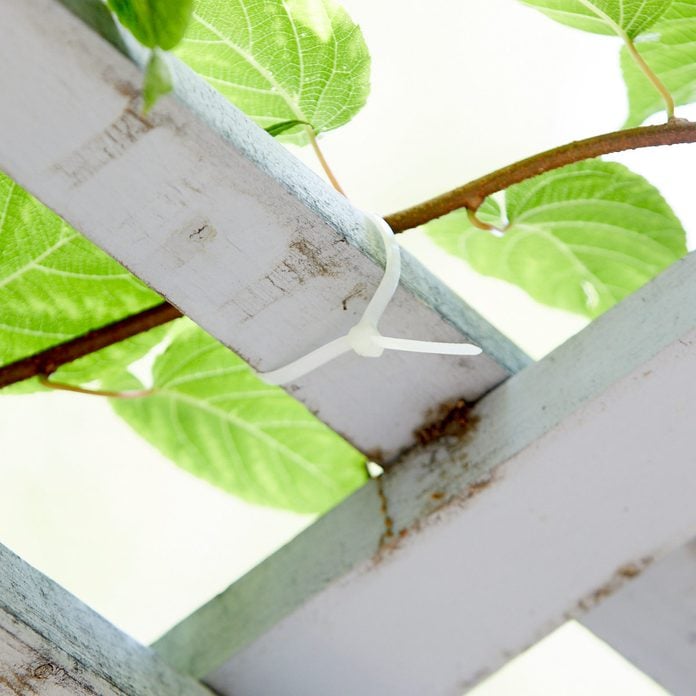
Vine Support
Climbing plants are a great addition to pergolas and garden arbors. To help your vines stay up, use zip ties to hold them in place. This tip also lets you arrange the vines across your support structure in a pleasing way.
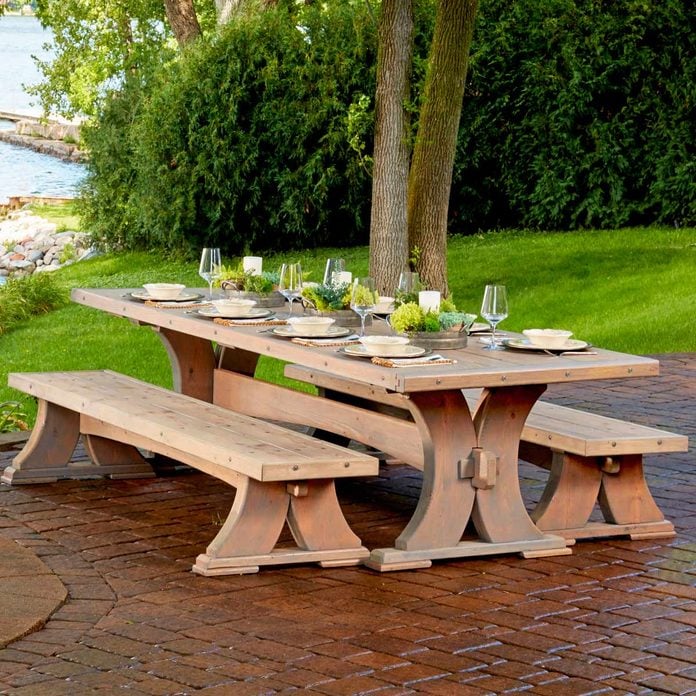
Viking Table
When the Vikings of yore built something—a longboat, a lodge, even a drinking horn—it was sturdy and simple, functional yet attractive. This DIY outdoor dining table fits that mold. It’s big, rock-solid and buildable with basic tools, yet it has a certain elegance to it.
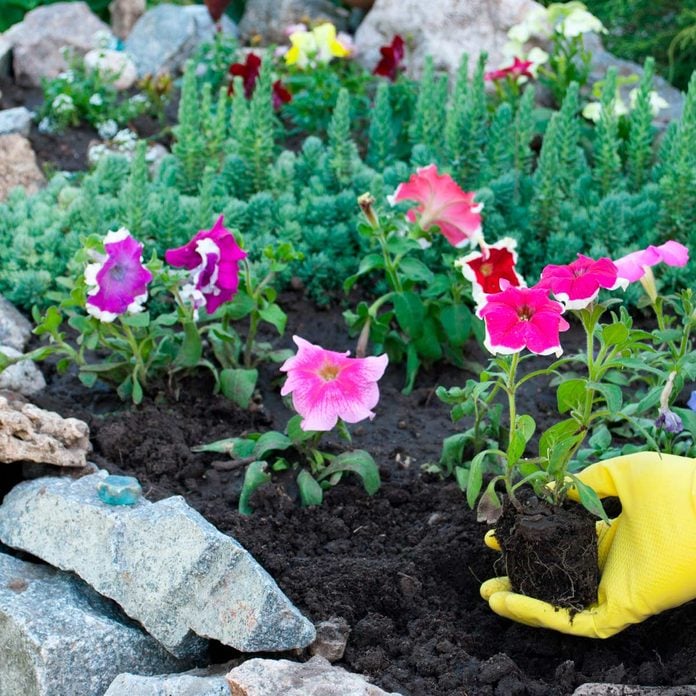
Use Flower Bed Stones in Your Landscape
Flower bed stones add a finishing touch to your landscape. Whether you stack them for a border wall or use them for an insect-proof mulch, stones serve a variety of purposes that are both natural and attractive.
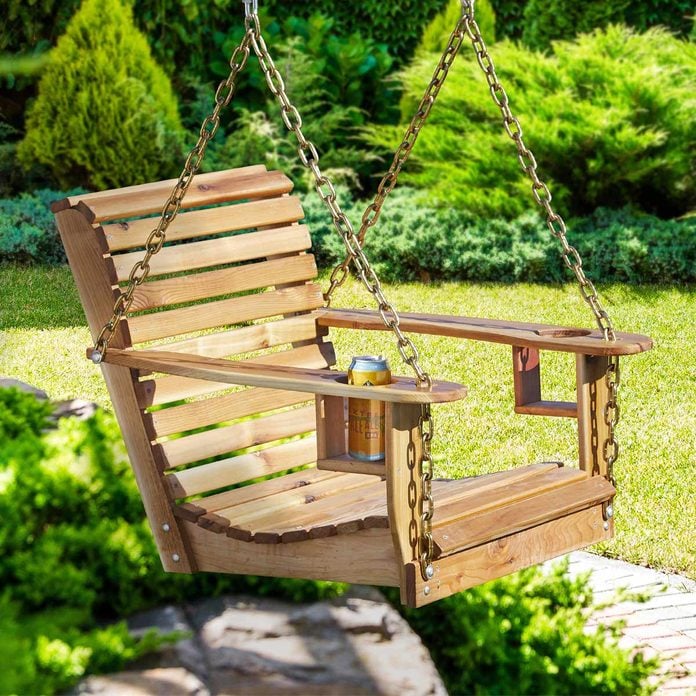
Backyard Swing
A seat like this is usually called a “porch swing,” and a porch certainly is a good location for it. But a hanging seat can go just about anywhere; unlike a chair, it doesn’t require a firm, flat surface beneath it. This DIY backyard swing design is especially forgiving. If your cuts are slightly inaccurate or not quite straight, the swing will still turn out just fine.
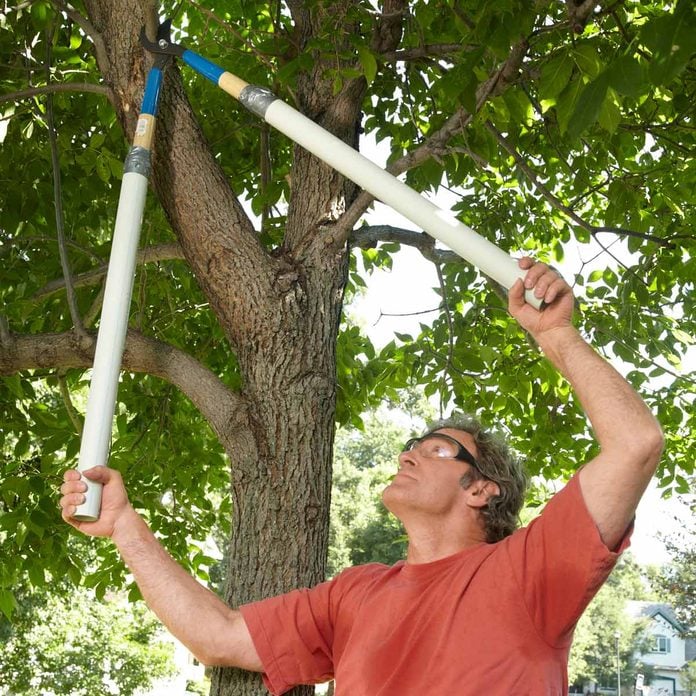
Prune Higher with Long Reach Shears
Make your yard trees look neat and tidy by slipping PVC pipes over the handles of your pruning shears and tape them in place to extend your reach and clip high branches without a ladder.
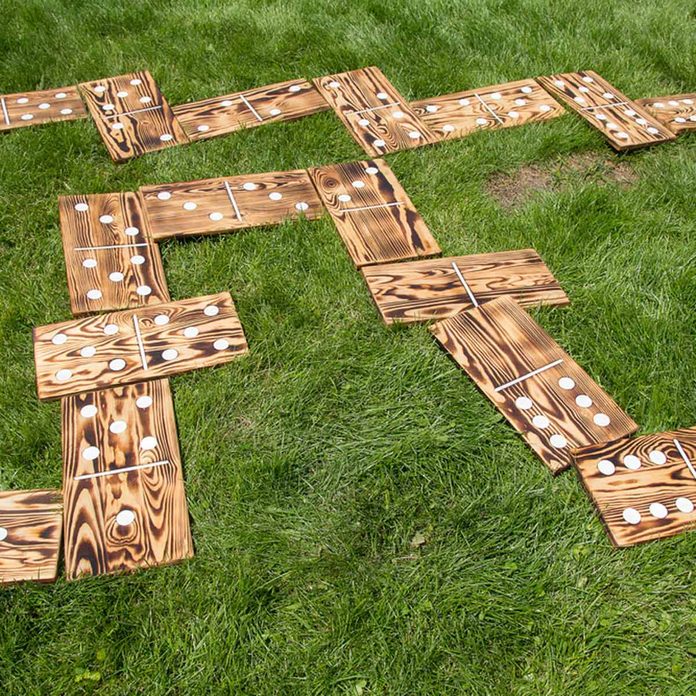
Lawn Dominoes
Take your love of dominoes to the great outdoors by whipping up a super-sized set that will get you on your feet in the sweet sunshine. This tutorial shows you everything you need to add this to your repertoire of backyard games.
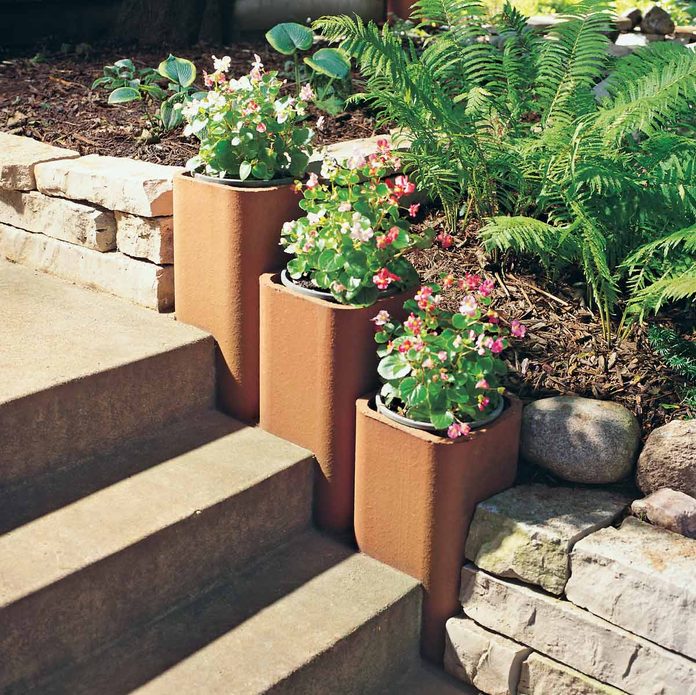
Chimney Flue Planters
To make these terra-cotta planters, go to a brick supplier and buy 3-ft. lengths of clay chimney flue liner. Cut them to different heights using a circular saw fitted with an abrasive cutting wheel. You can put them on a deck or patio, or accent your yard wherever you like—just pick your spots and bury the ends in the soil a little. Fill the liners with gravel for drainage, leaving 8 in. at the top for potting soil. Since the water can drain, the liners won’t crack if they freeze. Or just set pots on top of the gravel and bring in the plants for the winter. — Nancy Belmont
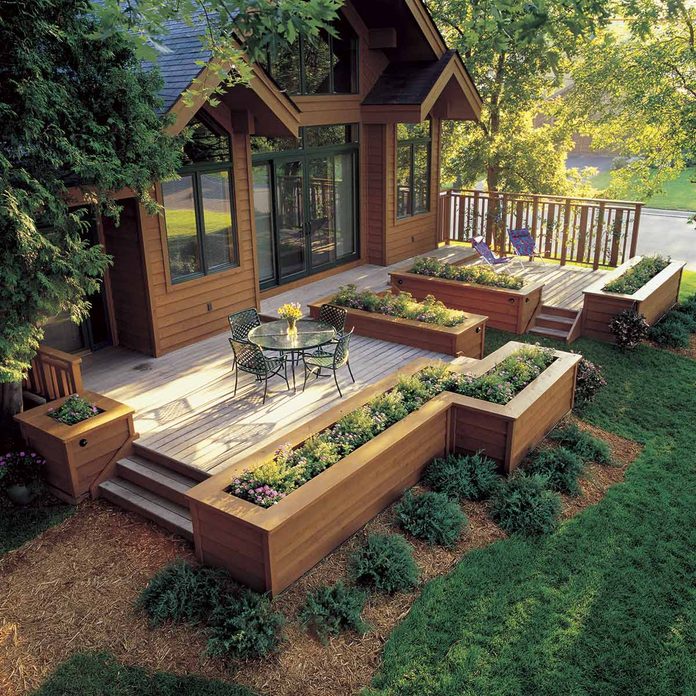
Built-In Planters
Planters make a striking addition to any deck, and also create more privacy, making the outdoor space feel almost like a separate room. This deck has built-in planters, and you can build it yourself.

Don’t Skip Fall Fertilizing
Before the lawn goes to sleep for the winter, you should feed it well. Even after the grass seems to go dormant, the roots are soaking up nutrients and storing energy for the next growing season. Surprisingly, it’s much more important to fertilize in the fall than in the spring, when most people do it. Like watering, this is one of the most important favors you can do for your lawn.
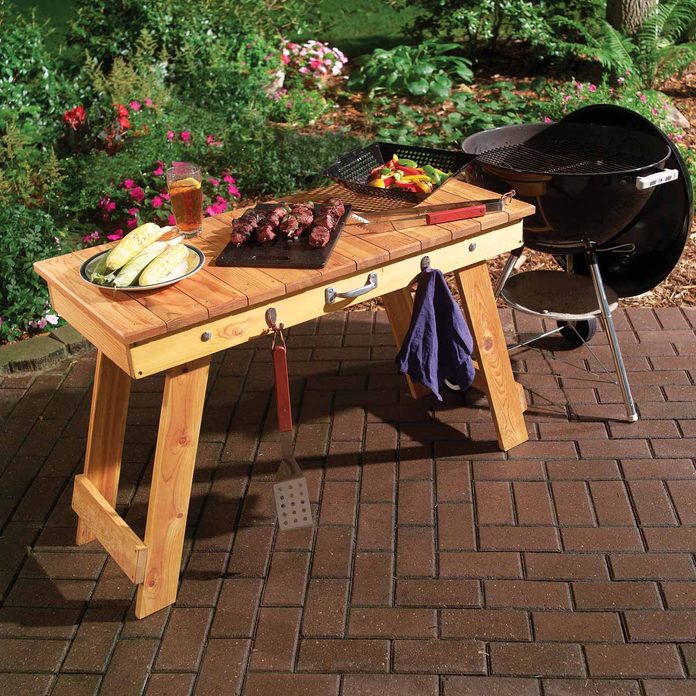
Fold-Up Grill Table
After building this collapsible cedar table, your family will wonder how they ever grilled without it. The legs nest under the top for quick storage or carrying to all kinds of other jobs, indoors or out.
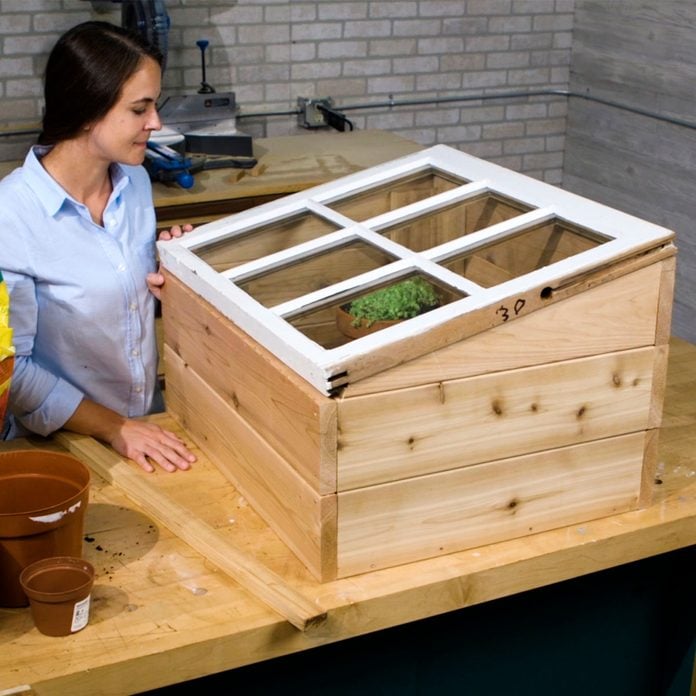
Mini-Greenhouse from An Old Window
Whether you want to prolong your growing season or get a jumpstart on spring planting, this mini greenhouse is for you. Start with some cedar boards and a few basic power tools, and you can knock out this outdoor project in just a couple of hours!
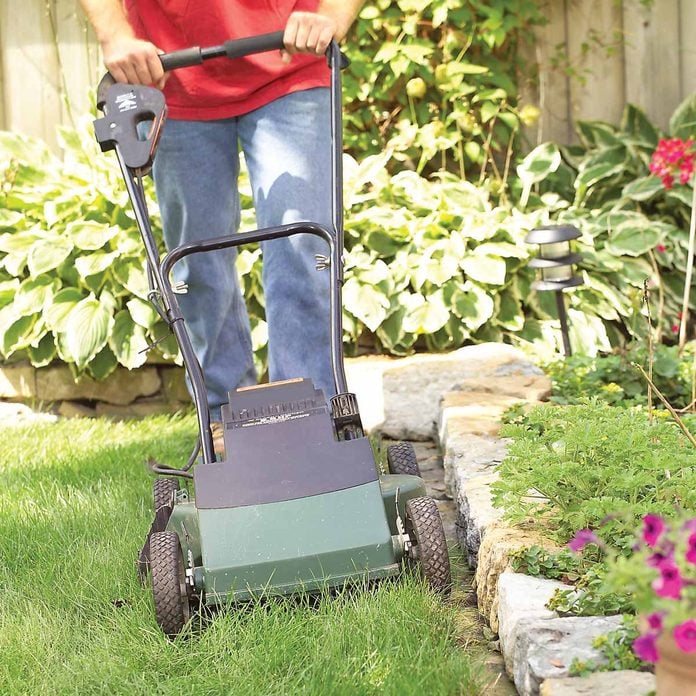
No-Trim Wall Border
If you’re building a fence or a retaining wall, set a course of protruding stones in the soil beneath it. That way, your mower can cut all the grass—no hand trimming needed. The stones should protrude about 4 in. from the wall and stand at least an inch above the soil so grass doesn’t creep over them. You’ll still have to pull out grass from between the stones occasionally. —Gabriel Castillo
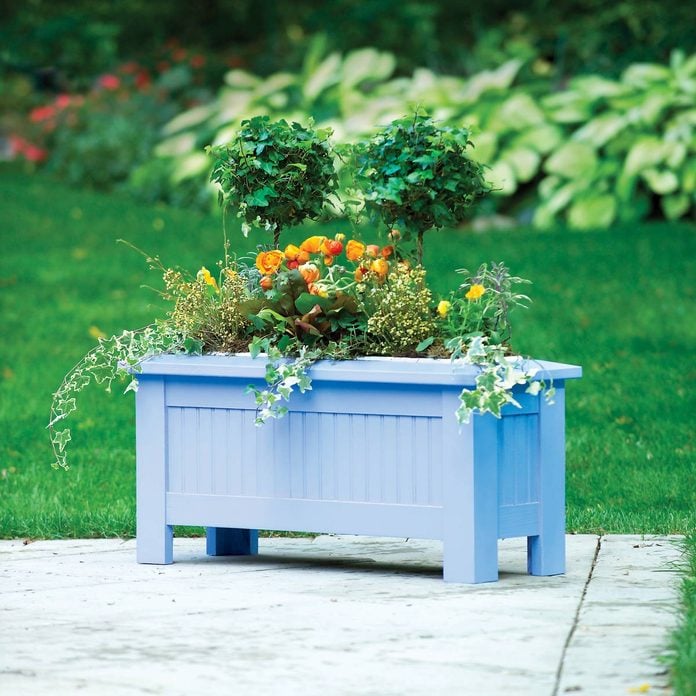
3-Season Planter Box
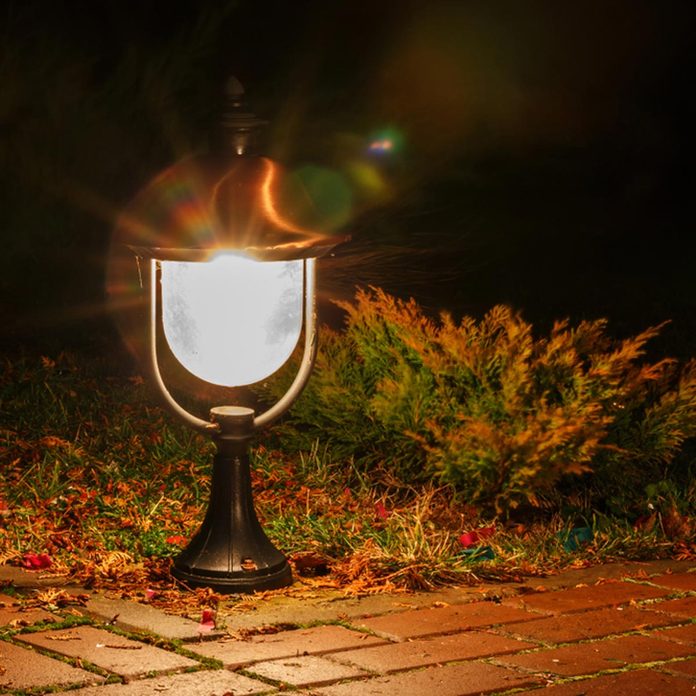
Use Accent Lights
Using even just a small accent light can work wonders for the dark corners around the yard. Not only will it create even more beauty, but it can also help keep away potential intruders who seek out dark places to stay unnoticed.
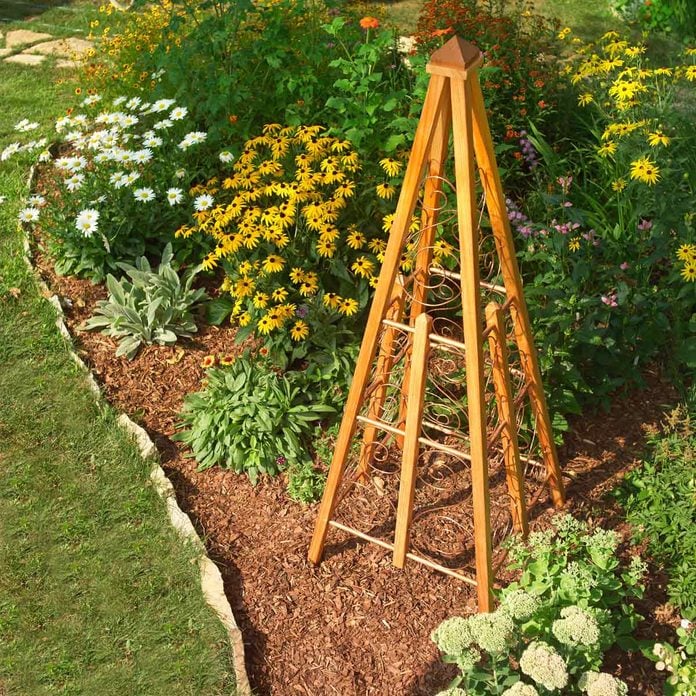
Cedar and Copper Trellis
Climbing plants like vines and roses lend a lot of charm to an ordinary garden, especially when they’re winding up a trellis planter as stunning as this DIY cedar and copper trellis. And its character just grows richer as the wood turns gray and the copper develops a beautiful green patina.
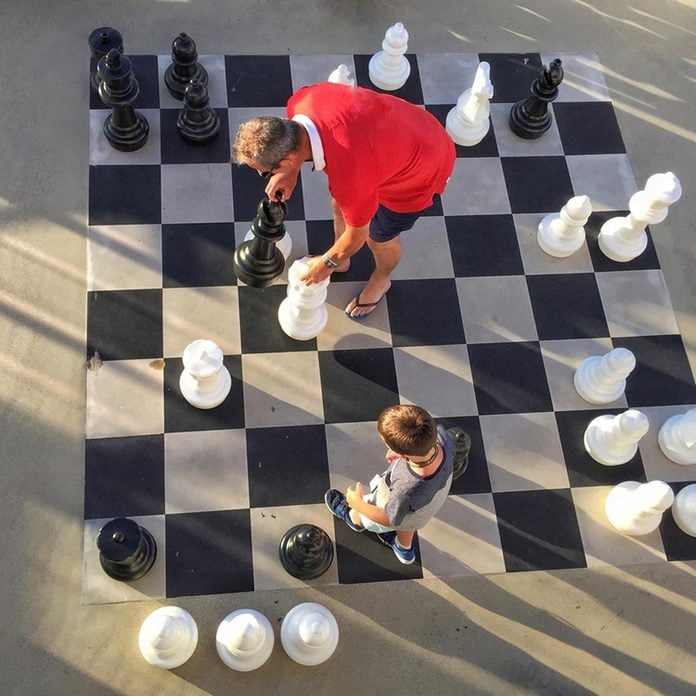
Life-size Chess Board
Ready to take your game of chess to the next level? Make it an active event by creating your own life-size chess board that will wow your guests. Just be sure you can beat them!
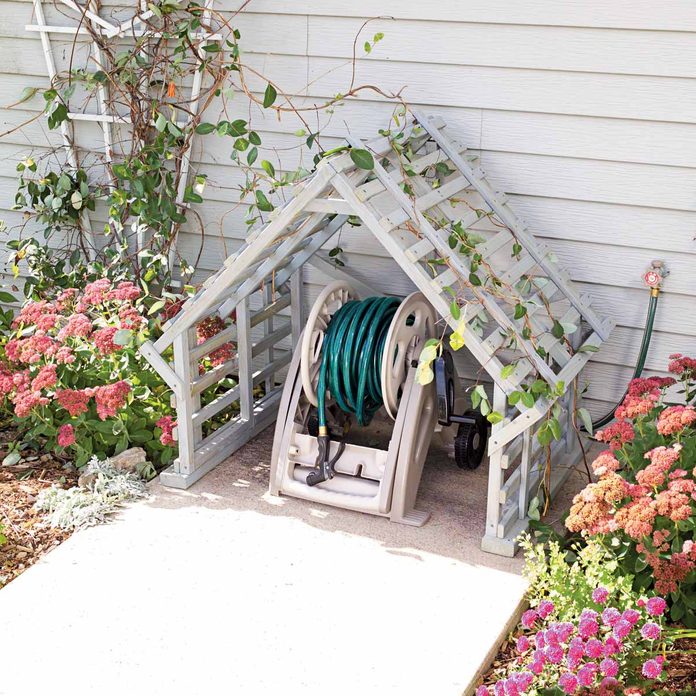
Hose Reel Hideaway
This latticework structure was designed as a way to hide plastic hose reels—but it can turn into a fun shady hideout for kids and pets as well. In a few years, the lattice will be covered with a dense mound of vines, and you’ll be the only person who knows there’s a hose hiding underneath.
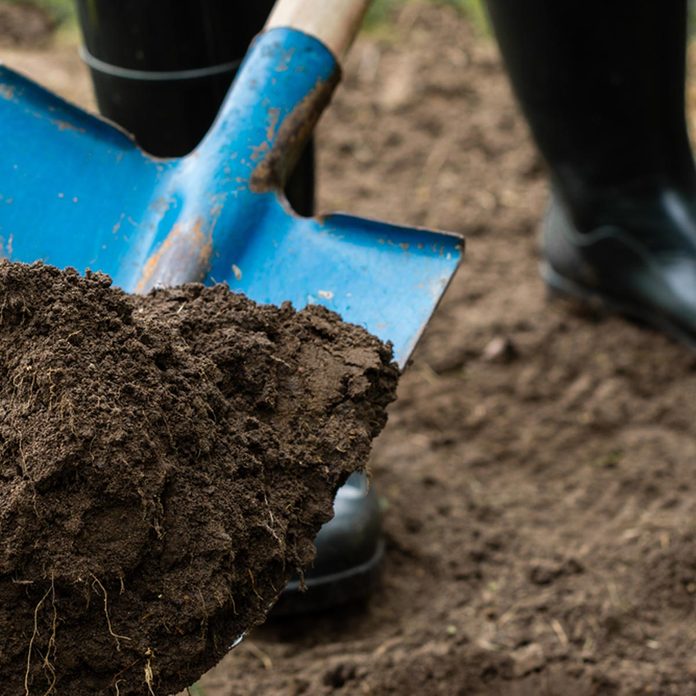
Test the Soil pH Level
Grass grows best when it’s growing in the “pH happy zone.” Grasses like a pH level between 6 and 7.2. If the soil is too acidic or too alkaline, the grass won’t thrive even if you do everything else right. So collect one tablespoon-size sample a couple of inches under the sod in three different places in your yard and take the three samples in for soil testing. Some garden centers offer the service or search the Internet for “soil testing” to find a place to send it.
You’re after a pH between 6 and 7.2. If it’s too high, you’ll treat the lawn with iron sulfate or sulfur; too low and you’ll use pelletized limestone. Whoever does the testing will tell you what and how much to use to fix the pH. Applying the treatment is as easy as walking around the yard with a spreader. Learn from these biggest mistakes people make with their yards.
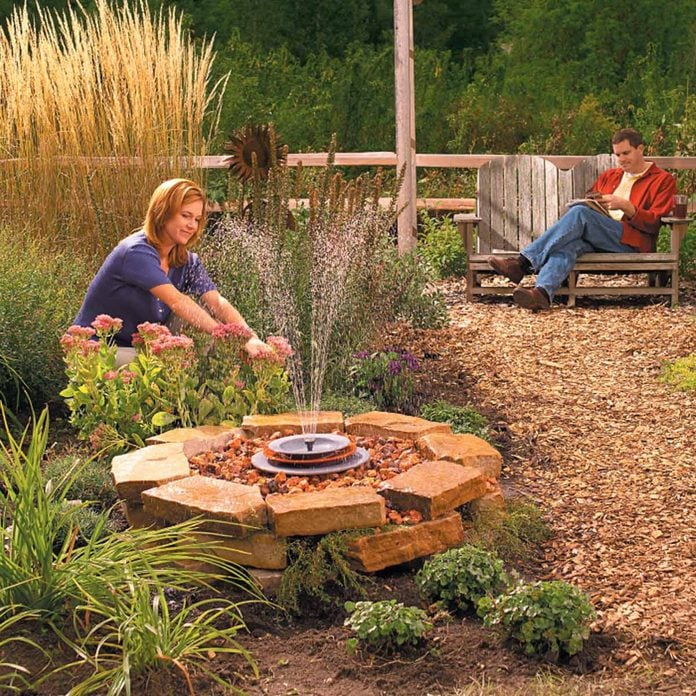
Build this Soothing Fountain in an Afternoon
This soothing DIY fountain is a “disappearing fountain” so there’s no exposed standing water. This means there’s less maintenance since there’s less chance debris and critters will wind up in the water. Yet it provides the soothing sight and sound of running water people love. Another bonus—since birds love moving water, there’s a chance you’ll attract some of these outdoor friends. This quaint fountain is proof that good things come in small packages.
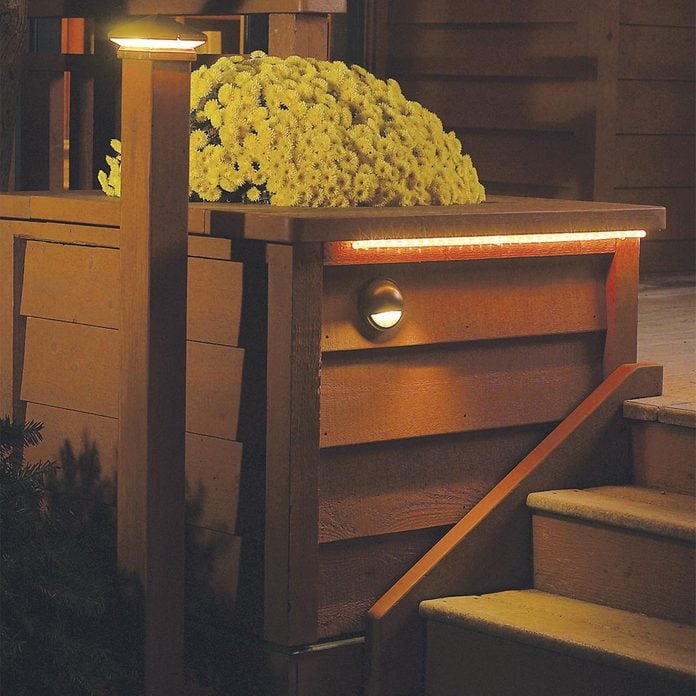
Backyard Deck Lighting
Plan and install a low-voltage lighting system to light up your deck. No electrical skills needed; you simply plug the system into an existing outlet. It’ll highlight deck features without glare and is safe and easy to install. Here are the best outdoor smart plugs.
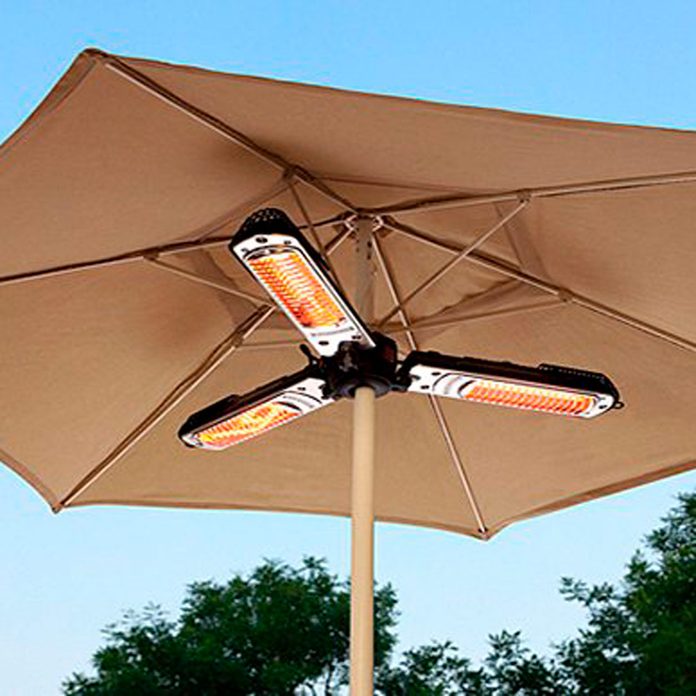
Hiland Electric Umbrella Heater
A great option for evenings around the patio table, this electric umbrella heater from Hiland warms up to 15 square feet and is designed to work under patio umbrellas. With three burners and a variable temperature control, it’s a great way to stay warm once the sun sets. Buyers noted it was easy to install and remove when you need to put the umbrella away. Yet another reason why we think this is one of the best outdoor patio heaters.
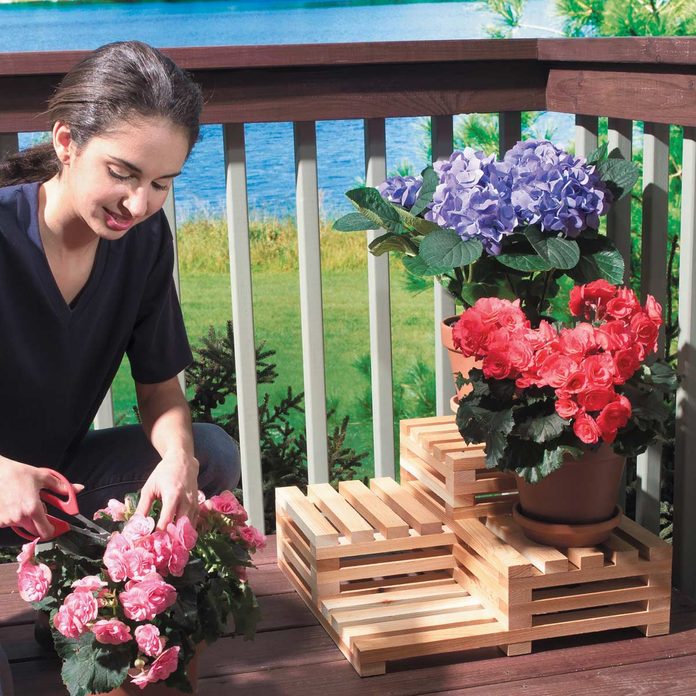
Stair-Step Plant Display
If you’re as hungry for spring as we are, maybe this simple plant stand will help. You build it from boards that are cut into just two lengths, stacked into squares and nailed together. You’ll only need seven 8-ft. long 1x2s, exterior wood glue and a few dozen galvanized 4d finish nails. We used cedar for its looks and its longevity outside, but any wood will do.
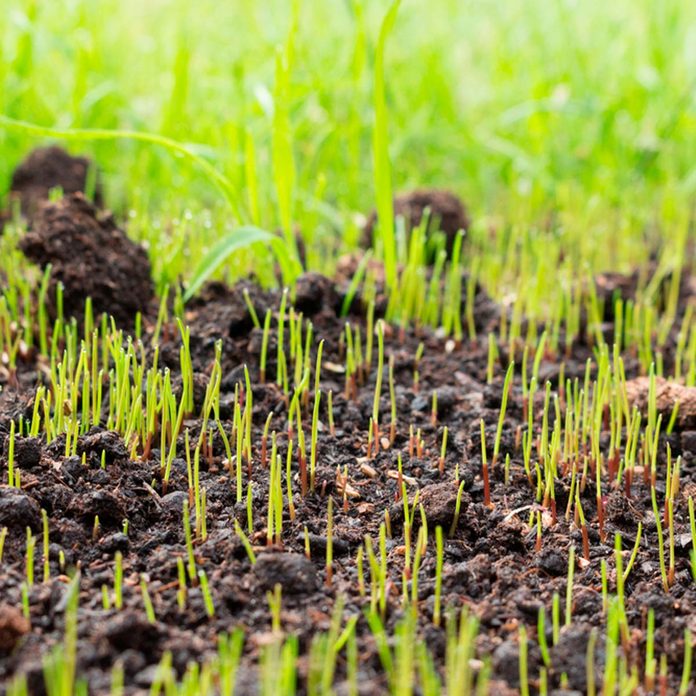
Reseed Late in the Growing Season
Reseed in the late summer/early fall. Whether you’re seeding a small patch or a whole yard, you’re going to be much more successful if you wait for the cooler, damper weather of late summer or early fall. It’s almost impossible to get seed to survive during the dog days of summer. It’s simply too hot and dry. You’ll most likely just waste your time and expensive seed.
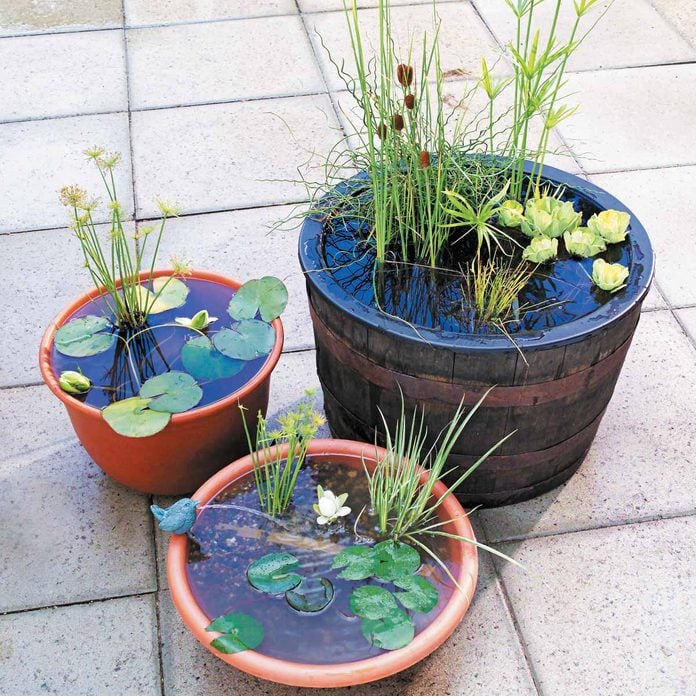
Pint-Sized Water Gardens
These pint-sized water gardens are extremely low maintenance. Top them off with water before you go on vacation, and they’re still beautiful when you come home. Container water gardens are inexpensive and easy to build, too.
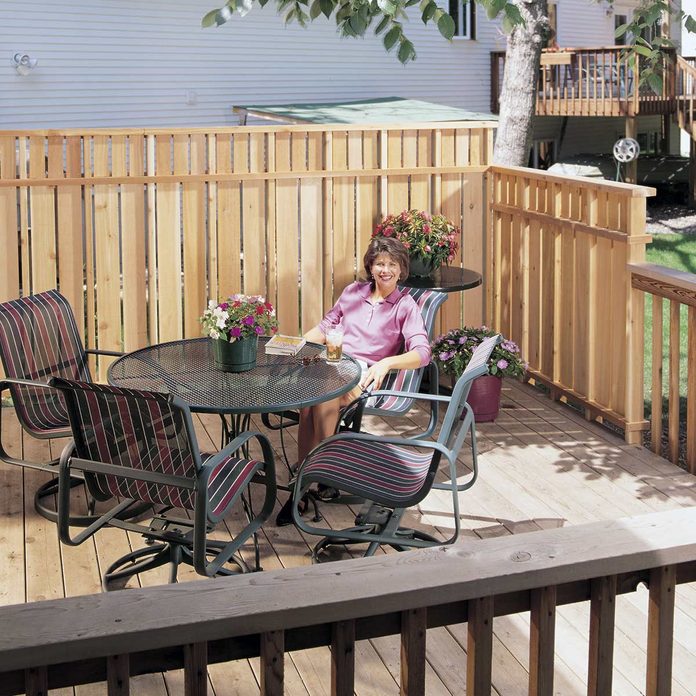
Privacy Fence
Convert a deck railing into a handsome privacy screen and block nosy neighbors, unsightly views, wind and noise. It’s easy to build and will fit most decks. And it’ll make your deck a more comfortable, welcoming place.
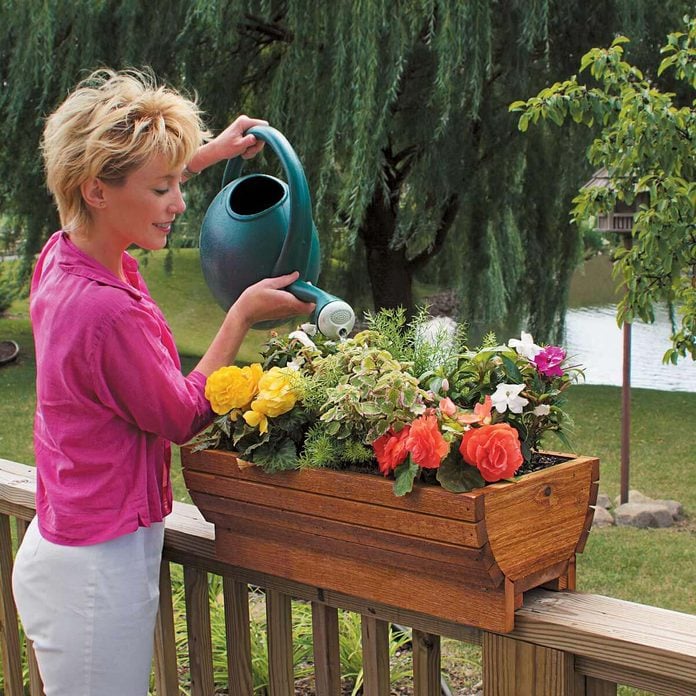
Sturdy Deck Planter
This sturdy deck planter has a clever design so it can rest securely on a 2×4 or 2×6 deck railing or sit on a patio, porch or deck floor without tipping. Plus, it can be made just about any length you want. If that’s not enough to get you building, it’s easy to make, even for first-time woodworkers.
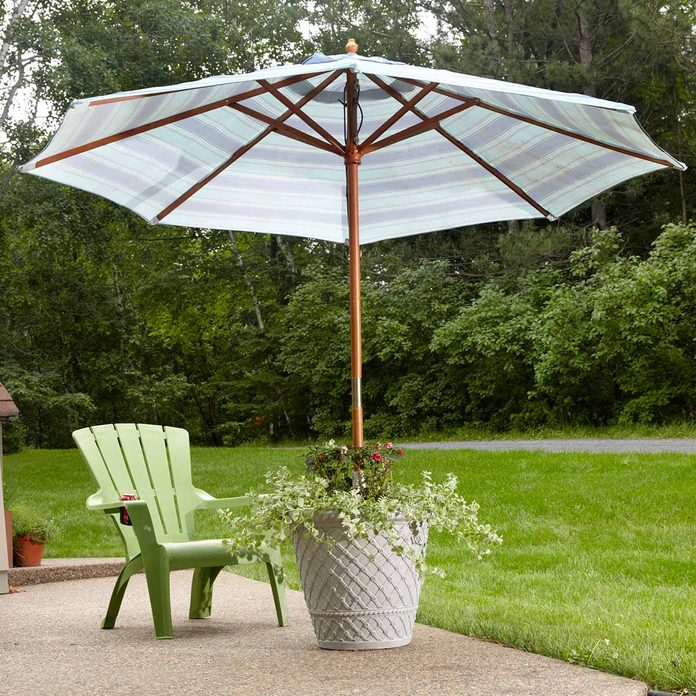
Move-Anywhere Umbrella
This moveable umbrella is one of our favorite reader-submitted DIY deck ideas. “I needed a stand for the large shade umbrella I bought for our patio,” says reader Brenda Barnes, “but all the ones I could find were designed for use under a patio table. Then I had a brilliant idea. I bought a large resin flowerpot and filled it about a third full with concrete. While the concrete was wet, I inserted a short length of PVC pipe that was just slightly larger in diameter than the umbrella pole. I covered the bottom of the pipe with duct tape so it wouldn’t fill with concrete. Then I drilled a few drainage holes above the concrete, filled the pot with potting soil and planted some shade-loving plants. Now I have a windproof umbrella stand and a beautiful pot of flowers in one!”
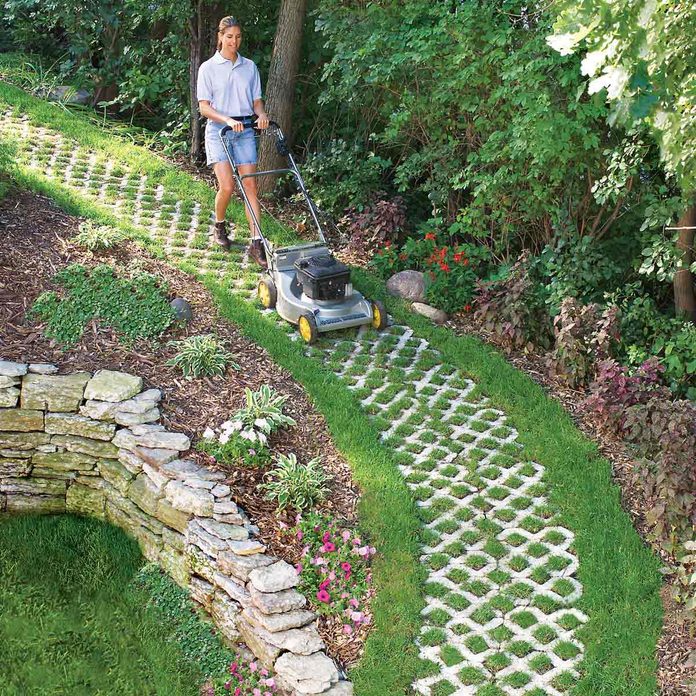
A Paver Path That Grows
Weave this Trustone paver path just about anywhere in your yard. There’s no thick base to install or difficult cutting and fitting; you just lay the stone over a simple dirt bed and lay sod squares. This easy-to-build paver path will last a lifetime and looks great too!
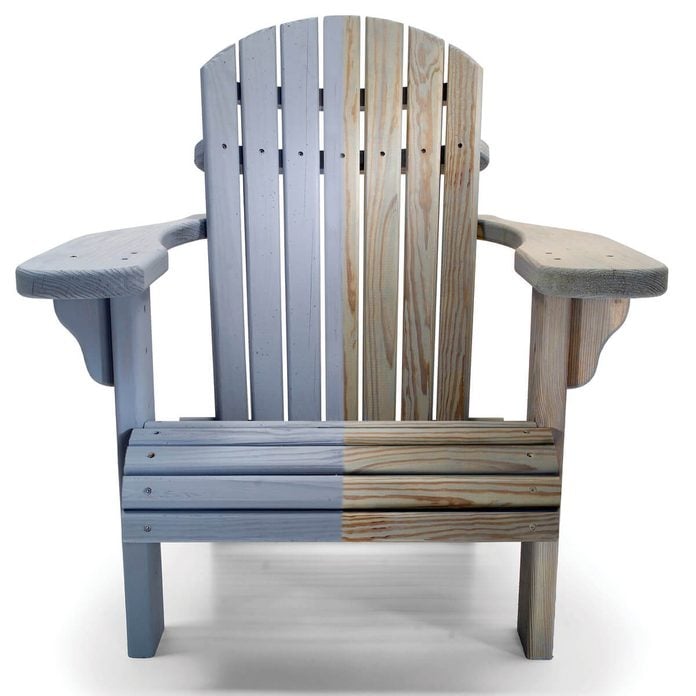
Add Color to Treated Wood
If you want to apply a colored finish to new furniture, choose one that you can renew fairly easily, because no finish is likely to last more than three to five years. We recommend either a semi-transparent or a solid exterior stain. The solids will protect the wood longer than the semi-transparent stains.
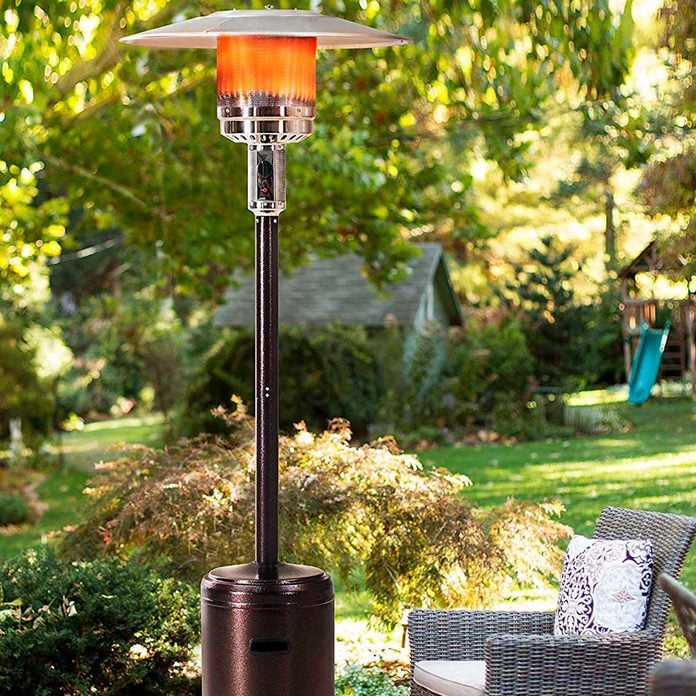
Sunjoy Propane Heater
Great for those who may want to move the heater from one spot to another, this propane heater from Sunjoy has wheels for easy transport and mobility. This patio heater heats an area with a radius of 9.5 feet and has a safety shutoff valve in case the heater tips over. “The heater feels very sturdy and well-made. We can’t wait to enjoy those cool California nights out on the patio this winter,” said one buyer.
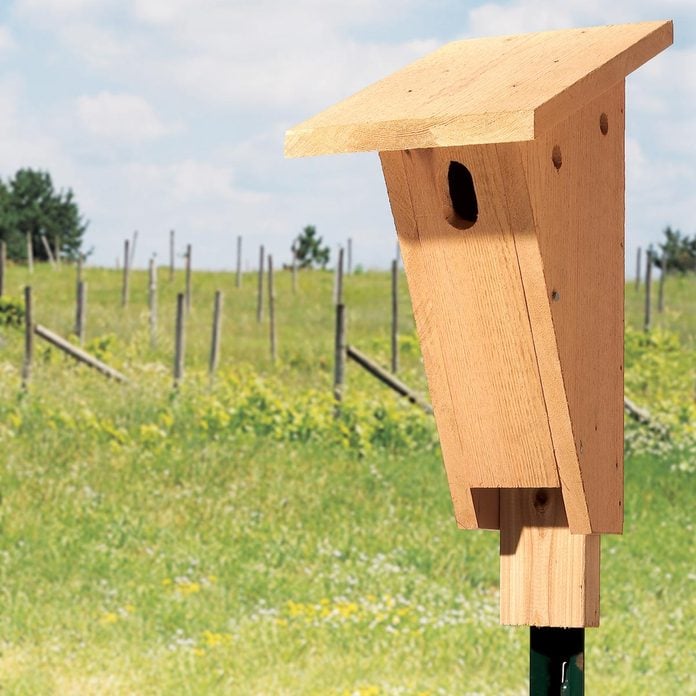
Build a Bluebird House
Bluebird populations declined during the first half of the last century as habitat loss and the introduction of “pest” bird species claimed many of the bluebird’s natural nesting sites. Now, however, bluebirds are making a dramatic comeback, thanks to thousands of dedicated folks who have put up bluebird nesting boxes.
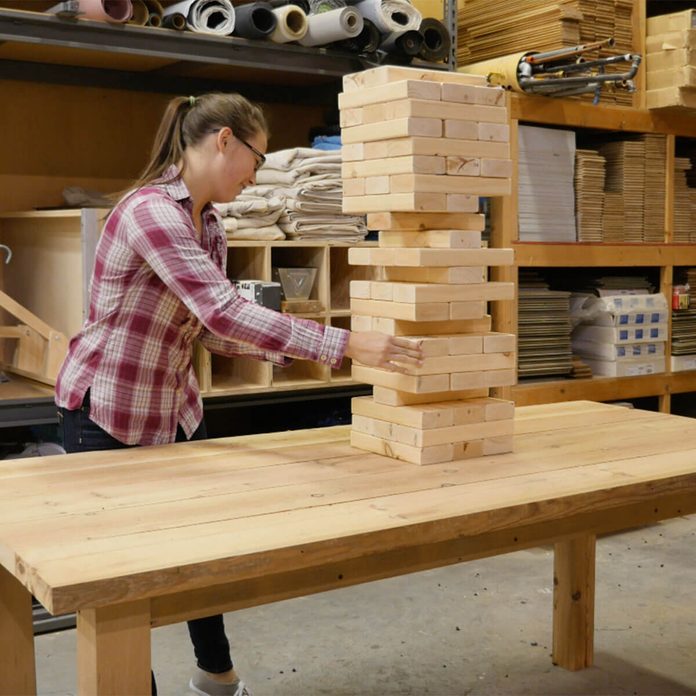
Jumbo Jenga
What’s better than gathering around an intimate table after dinner and playing a game of Jenga? DIY jumbo Jenga in the backyard, of course! You may have noticed some restaurants and parks have added an interactive space to their patios and open areas with this game, among others. Now it’s your turn to build the game yourself.
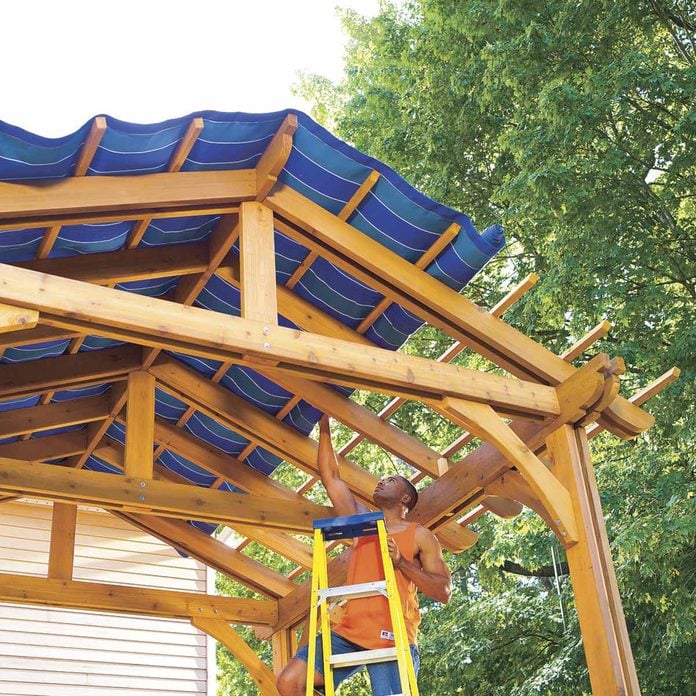
Shade Shelter
You don’t have to let the blazing sun or drippy weather drive you indoors. One of our favorite DIY deck ideas, this simple covered pergola, will keep you comfortable long after your neighbors with unsheltered decks have given up and gone inside.